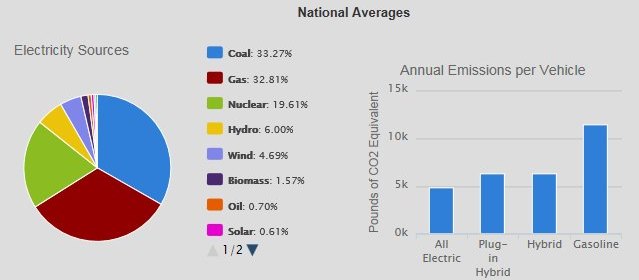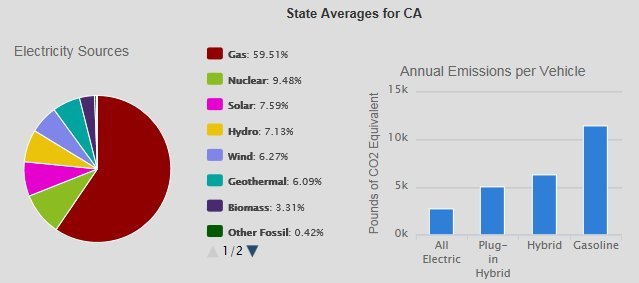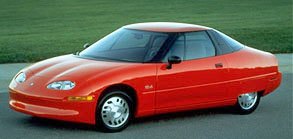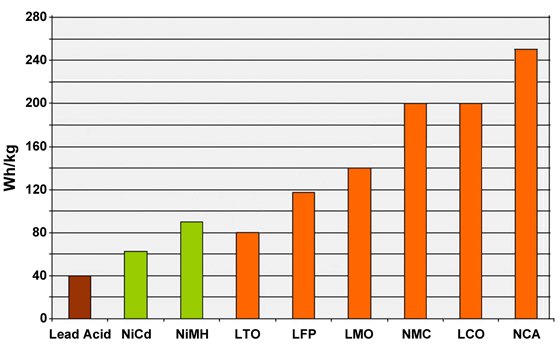|
AUTOZINE TECHNICAL SCHOOL
Electric Cars Introduction History
The earliest road-worthy electric cars emerged in 1880s, about the same time as motor cars. However, they failed to catch the public because the batteries then were very heavy, stored little energy and took a long time to recharge. As a result, electric cars received far less attention than motor cars, and they were forgotten soon. Compared with engines, battery technology progressed rather slowly during the next 100 years. In the late 1980s, California passed a premature legislation to cut roadside emission. It mandated mass manufacturers to sell at least 10 percent of their cars as Zero Emission Vehicles (ZEV) by year 2000. Obviously, electric car was the only option. In response to the law, GM introduced the first practical EV in 1997. The EV1 was probably more matured than any other electric cars then, but it still employed lead acid battery, which weighed half a ton and occupied so much space that the car had to be designed as a 2-seater. In addition to high production costs, it was uncompetitive against conventional cars. No wonder GM itself was not enthusiastic about the idea and terminated the program just after 2 years.
Nevertheless, entering the 1990s, the rise of laptop computers and mobile phones drove the demand for higher performance rechargeable batteries. More money was invested into the field and battery technology started taking off. Nickel-metal hydride and Lithium-ion batteries were invented, greatly reducing the size, weight and charging time. For automotive applications, cost remained a concern though, but following the introduction of Nissan Leaf and Tesla Model S as well as heavy government incentives, electric cars became competitive. As more EVs were sold, more suppliers invested into battery and electrification technologies, and unit cost of components goes down. Meanwhile, government legislations keep tightening the pollution and CO2 emission limits of conventional cars such that the latter get more expensive to build. This turns the balance further in favour of electric cars. Hurdles and Outlook There are still a few hurdles electric cars must overcome before they could replace motor cars as the majority of our transportation: Firstly, battery cost needs to be slashed drastically, otherwise electric cars would not be able to penetrate into C-segment or below without government incentives. Fortunately, in the past few years we saw the trend going to the right direction as battery makers expanded production and lifted economy of scale. Tesla's Gigafactory, the world's largest battery factory, will lower production cost further. Secondly, the energy density of battery needs to be lifted considerably so to offer practical travelling range without occupying too much space or burdening the car too much. Currently, EVs normally weigh several hundred kilograms more than conventional cars due to the batteries. Tesla is clever to pack the batteries under the floorpan so to save space and lower the center of gravity, but the extra weight still calls for a stronger chassis, larger motors and more in everything to cope with, which translate to extra costs. BMW i3 sought weight reduction by using exotic carbon-fiber and aluminum in elsewhere of the car, but that also increases costs. Energy density of batteries, measured by Watt-hour per kilogram, has been improving steadily throughout the years thanks to improved chemistry and battery construction. However, it might take a revolutionary new battery to enable EVs to match petrol cars for power-to-weight ratio. Thirdly, charging time has to be cut massively, because you don't always have a whole night to charge the battery. Quick charging stations might help a little, but still not everyone has the luxury to spend 30 minutes or so at the station. Better Place's Quick Drop battery replacement system is a good idea to solve the problem. It allows a specially designed EV like Renault Fluence Z.E. to replace depleted battery with a fresh one at its stations, so the whole process is even quicker than refilling gas. Unfortunately, this technology calls for the use of standard-size batteries, which compromises the packaging of the car. Lastly but not least, charging infrastructure has to be widely available. Governments can do something in this respect, but it will take many years or even decades before charging stations become as popular as gas stations. After all, petrol supply infrastructure took decades to build up. GPS navigation and autonomous driving technologies might relieve the pain as they help finding charging stations. However, driven by the urgency to stop global warming, electric cars seem to be the inevitable future of motor industry. Battery Early electric cars, including GM EV1, employed good old lead acid batteries, just like the starter batteries on conventional cars. Lead acid battery is cheap and safe (unlikely to catch fire or explode), but its energy density (Wh/kg) is rather low, so for a given charge capacity it needs to be large and heavy. It is also slow to recharge, typically taking more than 8 hours. Moreover, its lifecycle is only 400 times of recharge, so during an EV's lifespan the battery has to be replaced multiple times. No wonder it was soon phased out and never really made an impact on the commercialization of EVs. As battery development progressed, higher performance kinds of batteries emerged:
Nickel Metal Hydride (NiMH) battery was first adopted by Honda's experiental EV Plus in the late 1990s. Its energy density is more than doubled from lead acid, so for the same weight it can deliver more than double the driving range. It is also faster to recharge and has a longer lifecycle. NiMH batteries are widely used on hybrid vehicles, including the first four generations of Toyota Prius. However, its performance is not good enough for modern EVs. Currently, Lithium-ion batteries are by far the most popular for EV applications. It has higher energy density, is faster to charge (<1hr with quick charger) and lasts longer (>1000 cycles). However, there are actually many kinds of Lithium-ion batteries, depending on chemistry, and their characteristics vary. Those used on EVs are: LTO or Lithium Titanate (Li4Ti5O12): used by Honda Fit EV and Mitsubishi i-MiEV, but it is phasing out. Low energy density and expensive, but quick charging and very durable (up to 7000 cycles). Low risk of fire or explosion. LFP or Lithium Iron Phosphate (LiFePO4): used by BYD EVs. Safe, long life (2000 cycles) but low energy density. LMO or Lithium Manganese Oxide (LiMn2O4): average energy density but high specific power (W/kg). It is usually mixed with NMC to improve power output. NMC or Lithium Nickel Manganese Cobalt Oxide (LiNiMnCoO2): used by Nissan Leaf, Chevrolet Volt, BMW i3 and many other EVs. High energy density and good all-round performance. Usually mixed with some LMO to lift power output. NCA or Lithium Nickel Cobalt Aluminum Oxide (LiNiCoAlO2): used by Tesla. It offers the highest energy density, but is more expensive due to cobalt, and more prone to fire if damaged. NMC and NCA are now dominating the EV market. Efficiency and GHG emission Electric cars use energy far more efficient than gasoline/diesel cars. Currently, the best Atkinson-cycle gasoline engines have a thermal efficiency of 40 percent. This means 60 percent of the energy in fuel is wasted through exhaust, heat and vibration etc. The remaining 40 percent is further deducted by the loss in drivetrain and peripherals (power steering, pumps, electronics etc.), so eventually there is less than 30 percent reaches the wheels. Diesel engines are a few percentages higher, but still waste most energy. In contrast, electric machines have very high efficiency. Electric motors typically deliver 90 percent efficiency, while power electronics (inverter and control modules) consume about 5 percent. The flat torque curves of electric motors save the need for gearboxes, thus reduce drivetrain loss massively. The battery charging and discharging efficiency is about 85 percent. Moreover, electric cars make use of regenerative braking to recapture the kinetic energy into battery. Overall, a good EV can convert more than 70 percent of plug-in electricity into power that drives the wheels. When it comes to environmental impact, the analysis is more complicated. Electric cars themselves do not emit greenhouse gas, but the infrastructures that produce and transmit electricity do. Taking them into account, how green is electric cars? The best way to compare EVs and conventional cars is to calculate their well-to-wheel emissions. Well-to-wheel emissions include all emissions related to fuel production, processing, distribution, and use. In the case of petrol cars, emissions are produced while extracting petroleum from the earth, refining it, distributing the fuel to stations, and burning it in cars. In the case of electricity, the emissions from power plants are included, as are additional emissions associated with the extraction, processing, and distribution of the primary energy sources they use for electricity production. In short, the well-to-wheel emission of electric cars depends very much on how electricity is produced. If it is produced from renewable energy sources like hydropower, solar/photovoltaic or wind, the well-to-wheel emission will be close to zero. On the contrary, if electricity comes from coal-fired power plants, the emission will be high. Therefore, the well-to-wheel emission depends on the electricity mix of the region. Below shows the electricity sources of USA:  Its electricity mix consists of a lot of
coal-fired power, so the annual emission of EV is quite high, although
still much lower than gasoline cars. For California state, the
electricity mix is much greener, using more gas and renewable energy:
 As shown, the annual emission of EV in
California is nearly halved
compared with USA average. It is less than a quarter of gasoline cars.
In EU, research institution JRC conducted a research in 2014 to forecast the well-to-wheel emissions of different vehicle technologies, based on EU electricity mix:
Again electric cars is the greenest. |
||||||||||||||||||||||||
| Copyright© 1997-2017 by Mark Wan @ AutoZine |

